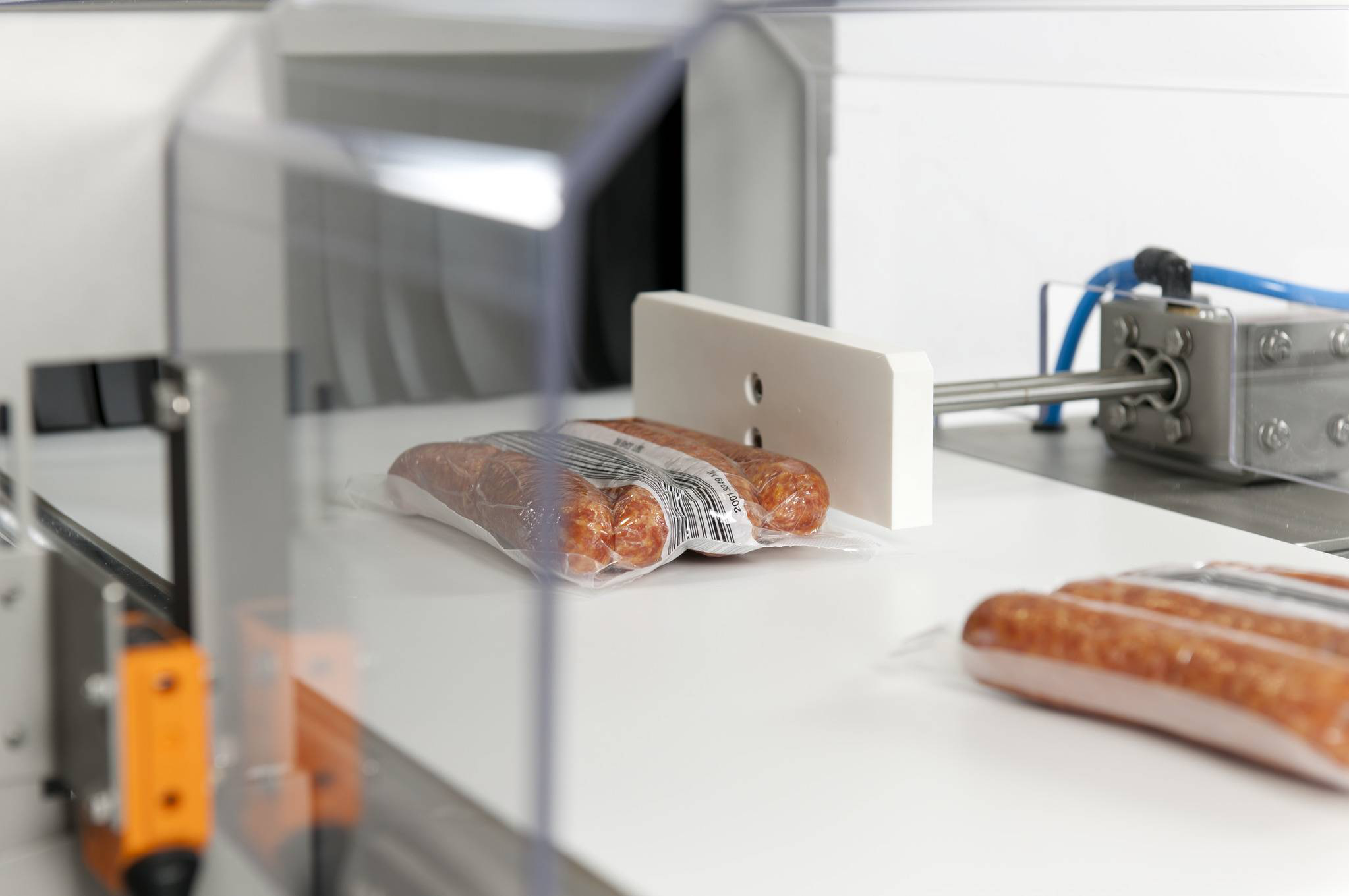For food safety in manufacturing and processing companies, a well-functioning foreign body management is of crucial importance. It not only protects the health of the end consumer but also offers many advantages for food companies themselves. Efficient procedures with state-of-the-art technology for reliable identification of contaminants increase productivity, are sustainable, and facilitate access to competitive markets. The Sesotec experts for food safety highlight the basics of adequate foreign body management and the benefits for food manufacturers.
What does foreign body management mean? Why is it important?
Foreign body management is a procedure for examining, identifying, and preventing contamination in industrial food production.
In the age of globalization, it is an important endeavor, as the risk of contaminated food increases with the complexity of supply chains. The products pass through multiple stations and undergo a variety of processing steps. The global interconnection of agriculture, processing, production, transport, and consumption is ultimately necessary to feed a steadily growing world population. Adequate quality management for foreign body control reduces the risk of contaminated food for the benefit of the end consumer and protects the production and image of companies in the food industry.
The global interconnections of the food industry are complex: whether in production, logistics, or sales.
The early detection and prevention of contamination also promote efforts for more sustainability throughout the supply chain. The rapid exclusion of contaminated food from the production cycle conserves resources that would be consumed for further processing and transport. At the same time, efficient foreign body management minimizes the risk of contaminated food also contaminating other products and thus prevents food waste.
Certifications for food safety and protocols for foreign body control
All internationally recognized standards for food safety are based on the HACCP concept. This involves identifying and assessing potential hazards to food safety in order to establish a procedure for proactive risk control and reduction. Foreign bodies are among the most common types of contamination. Accordingly, certifying organizations always assess the protocols for the investigation, identification, and ultimately prevention of contamination in food during audits.
Adequate foreign body management is therefore an important prerequisite for certification according to, for example, DIN EN ISO 22000, IFS, BRCGS, SQF, FSSC 22000. Although the standards differ in their requirements regarding preventive measures, they all require the use of methods for detecting and removing physical foreign bodies, which must also be regularly validated and verified.
Some of the requirements for foreign body controls based on HACCP are:
BRCGS – Risks of contamination are considered in the hazard analysis (2.7.2), the documented risk assessment (3.5.1.1), as well as the assessment of the equipment maintenance program (4.7.2) and cleaning protocols (4.11.3). At the same time, the BRCGS standard contains a complete chapter with descriptions for the efficient use of systems for the identification and exclusion of foreign bodies (4.10)
IFS – The foreign body management is described in section 4.12 and is considered a "knock-out" requirement. In case of non-compliance, certification is not possible. In the IFS guide, good quality management for foreign body control is based on six aspects: quality and food safety management, resource management, food safety, responsibility of company management, planning and production process, as well as ongoing measurements, analyses, and improvements
Methods for Identifying Contaminants in Food
In addition to the protocols and technologies for avoiding contamination, foreign body management based on HACCP must also have methods for identifying contamination. Foreign body detection systems serve as a control mechanism at critical control points in food production. The three most common types of such devices are:
- Metal detectors and separators – To identify both ferrous and non-ferrous metals in food and reliably exclude them from the process flow, metal detectors are used. They reduce the risk of contamination due to equipment wear and other causes. For products that have high conductivity or are subject to the so-called "product effect," conventional metal detectors often prove insufficient. Metal detection with artificial intelligence offers even better protection under these circumstances
- X-ray inspection systems – With X-ray inspection systems, any foreign bodies can be identified whose density is higher than that of the food: including bone fragments, metals, glass, plastics, and more
- Magnet systems – Magnet separators are positioned along the production line to capture magnetic metal particles in material streams
These foreign body detection technologies are usually equipped with an ejection system that reliably removes the contaminated product from the production process.
In addition, advanced technologies are equipped with software solutions that record and store data on inspected batches and identified contaminations. This facilitates traceability as well as detailed documentation to assess the effectiveness of foreign body management.
For consistently reliable operation, the most important food safety standards also require regular maintenance and calibration of the detection systems.

The advantages of effective foreign body management
A reliable quality management for foreign body control is crucial for the health of the end consumer. However, there are also a number of advantages for food manufacturers themselves:
- Certifications that provide access to lucrative markets – To obtain certification from internationally recognized standards such as IFS and BRCGS, a well-thought-out and reliable foreign body management is required. Third-party certifications are increasingly becoming a prerequisite for business relationships with large producers, distributors, and retailers: both abroad and domestically. Without adequate foreign body controls to meet compliance standards, food manufacturers risk being excluded from lucrative markets or losing them to competitors
- Higher productivity - The implementation of state-of-the-art technologies for identifying contaminants drastically reduces the time and resource expenditure for manual inspections, sampling, and documentation. Fast, accurate, and reliable detection systems secure your production process without significant additional resource expenditure
- Lower costs – Detecting contaminants early and reliably saves costs associated with a lengthy investigation of potential sources. Additionally, undetected foreign bodies can lead to damage to equipment and cross-contamination. The result is costly repairs and increased food waste
- Reduces the risk of a recall – If no effective foreign body management is implemented, contaminated food ends up with the end consumer. The direct, immediately measurable costs associated with a product recall, averaging up to 10 million US dollars (~8 million €), can significantly threaten the existence of a company. Moreover, a major image damage occurs. Additionally, recall actions cause disruptions in operations and often lead to a large amount of wasted food.
Conclusion: Foreign body management protects consumers and your brand.
For companies in the food industry, the health and safety of the end consumer should always be the focus. This commitment requires the implementation and execution of validated processes to ensure food safety, including foreign body controls. But efficient foreign body management enables more than just consumer protection. With a functioning combination of innovative technology and well-thought-out procedures, the risks of contamination, associated costs, and food waste decrease. And your company's image will thank you for it.

